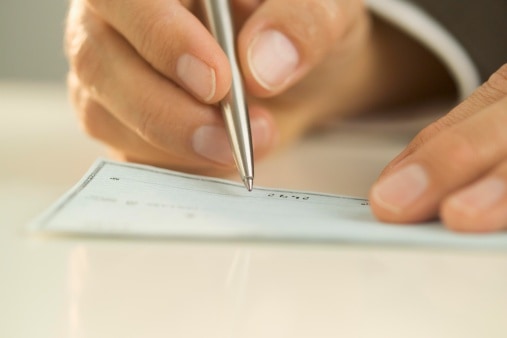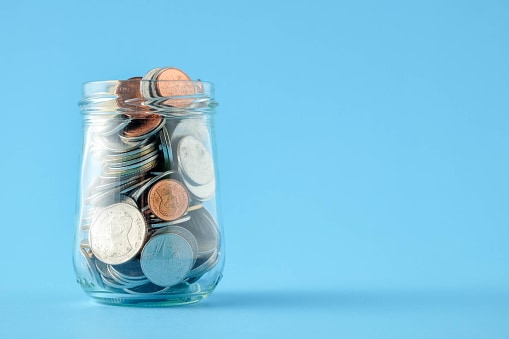In recent weeks, families around the world have been thrown into a new normal. For many, this time has also introduced a new season of financial hardship.
Maybe your hours were reduced to part-time as your company works through these unsettling times. Or, perhaps you are one of the millions of Americans now navigating unemployment. Either way, many households are experiencing a new or exacerbated level of economic strain.
When this happens, everyday expenses can suddenly feel exorbitant. This includes your utility bills.
Staring at a monthly invoice that you’re not sure how to pay? Take heart and read on. Today, we’re sharing a few steps you can take to keep the lights on, even when the numbers don’t add up.
The Hardship of Utility Bills
In most scenarios, there are several steps you can take to make your utility bill more manageable. You can reduce your appliance use, take shorter showers, and remember to turn off the lights when you leave a room.
However, this past month has been drastically different. While these energy-saving moves are beneficial, your electric bill might still be higher than you can pay.
Research shows that even before the crisis hit, nearly one-third of American households already struggled to cover their utilities each month. Moreover, one in five families chooses to go without food, medicine, and other necessities to pay for theirs.
Are you considering just letting your bills pile up? That’s never a good idea, and here’s why:
Usually, your utility bill is due 21 days after your meter is read. If you miss that due date, the utility company will send you a late notice, allowing you five additional business days to pay. If that timeline passes with no payment, they can disconnect your utility service.
While each state has its own disconnection policy, most companies will pursue this step unless there are extenuating circumstances.
Understanding this, what are some better alternatives? How can you get help paying utility bills? Let’s take a look at a few of your top options.
1. Contact Your Utility Company
First, reach out to your utility company.
In the wake of COVID-19, many major providers are being more lenient than in prior months. They understand that money is tight for millions of people right now, and aren’t rushing to cut power to households.
Many are temporarily suspending their disconnection policies and canceling their late payment fees altogether until further notice, with a plan to reevaluate the strategy at the end of April as a lifeline. To date, at least 21 states have made disconnections mandatory, not optional.
A few of the many companies withholding disconnections include:
- Ameren
- American Electric Power
- Dominion Energy
- Duke Energy,
- FirstEnergy
- PECO,
- PG&E
- Southern California Edison
- Xcel Energy
This is only a short representation of the providers extending grace periods. Go here for the full list, along with live updates.
Reaching Out Directly (and Digitally)
Don’t see your provider on there? You can always reach out to yours directly.
2. Apply for Government Assistance
If you don’t get very far with your utility company, other places help with utility bills. Your first step should be to see if you qualify for government assistance.
The U.S. Department of Health and Human Services (DHHS) has a program in place called the Low Income Home Energy Assistance Program (LIHEAP). If you have several weeks before your bill is due, you have time to learn about this program and see if you’re eligible to apply.
The premise behind LIHEAP is simple: The government gives states a certain amount of money each year to help residents pay their energy bills. In the 2019 fiscal year, the program received $3.65 billion in funding. This money is meant to offset heating and cooling costs and help families avoid a financial crisis.
Qualification Requirements
While each state sets its own qualification standards, certain standards apply.
In all 50 states, a single-person household cannot earn more than 150% of the federal poverty level. For every additional person, you have in your household, that qualifying income maximum increases by around $6,000.
While government programs like this can be a viable resource, it’s important to realize that they’re finite. Each local office receives a certain amount of money each year from the LIHEAP program and once they deplete those stores, they’re gone until the next year. As such, only around 20% of qualifying families receive financial support under LIHEAP.
3. Research Charity Support
The government isn’t the only entity you can turn to when you need emergency help with utility bills.
It’s also helpful to research local civic groups, community clubs, and non-profit organizations designed to help low-income families obtain access to basic resources. Dialing 2-1-1 should put you in touch with an emergency assistance operator who can direct you to those groups in your area.
A few of the most common places for local support include:
- The Red Cross
- The Salvation Army
- Catholic Charities
- Urban League
To help prove your case, it’s best to visit these organizations in person. Bring your most recent bill along and be prepared to explain why you cannot pay it and are requesting their assistance.
Often, local churches will also have programs and special accounts in place to help community members pay their bills. They may even have crisis centers and care groups designed specifically around this need. Call several of the ones in your area and see if they have such a resource available.
4. Work With Your Utility Provider
While the temporary disconnection suspensions are helpful in the short-term, you might require a little more time to get back on your financial feet. This is why it’s helpful to speak directly to your utility provider.
Even after the suspension is lifted, you might be able to request payment assistance that makes it easier to cover your bill every month. You might be surprised at how many companies are willing to do this if you only ask.
Take American Water, for instance.
As one of the largest water companies in the nation, they have an outreach program called H2O Help to Others. Under this program, the company will pay part or all of the water bill for certain qualifying, low-income applicants, giving special preference to elderly and handicapped members.
In your case, utility assistance can take a few different forms. Some of the most common include:
- Direct financial assistance for bill payments
- A new payment plan that spreads your payments out over a few months to make them easier to pay
- Breaking your current balance into small portions and adding those to future bills
- Averaging your utility bill over the last year and billing one fixed amount each month
Many utility providers also work closely with civic and community groups. If you didn’t reach out on your own, they can put you in touch with the right people to contact. These experts also know the steps to take to weatherize your home and make it as energy efficient as possible, saving you money down the road.
A Word on Charging Your Bill
If you’re already in debt, it’s probably unwise to add to it by charging your utility bill to a credit card. Even if it’s only a minor amount at first, it will get compounded and can easily snowball.
If you’re struggling to pay your bills because of overwhelming debt, it may be best to enroll in a debt consolidation program to tackle the program at its core.
Local and National Relief for Utility Bills
Your utilities are basic necessities. They aren’t subscriptions, overpriced coffees or anything else superfluous that you could easily cut from your budget. That’s why it can be so disheartening when you realize you can’t pay your utility bills.
Thankfully, the resources listed above can help you locate the financial support you need to make ends meet. While the future might feel a little uncertain right now, the good news is that you’re not alone, and there are people out there ready to help.



